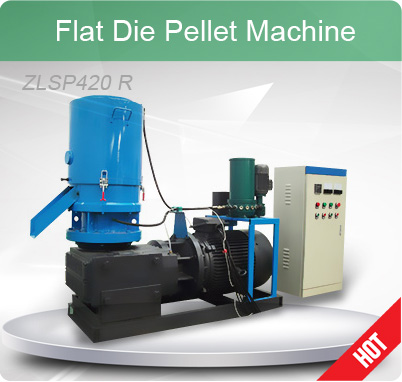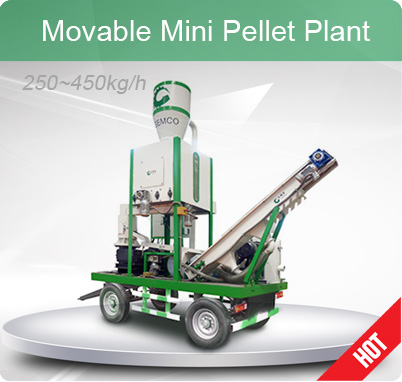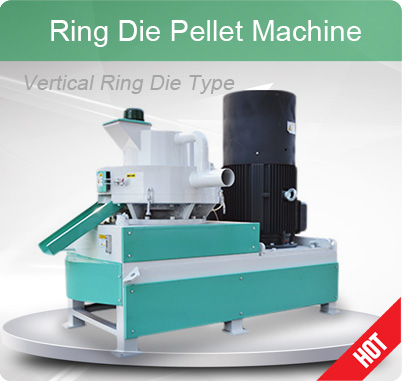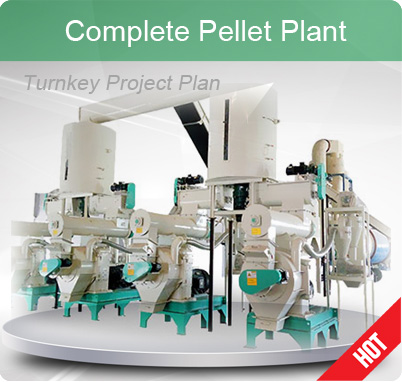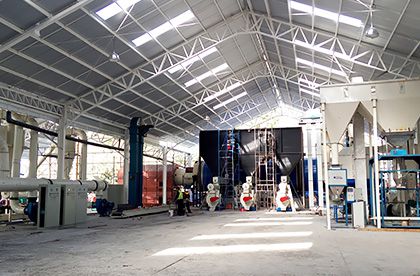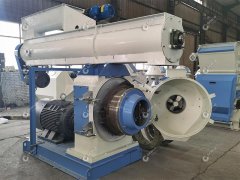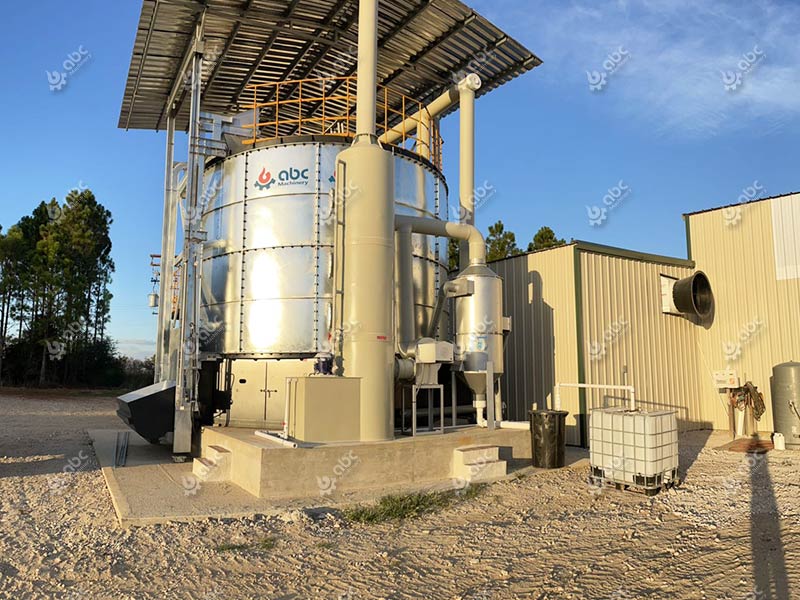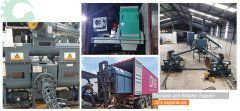Wood Pellet Press Machines Resolve Pellet Molding Challenges
With the global pursuit of environmental protection and sustainable development, the importance of renewable energy has become increasingly prominent. Among the many renewable energy sources, wood pellet fuel is gradually becoming a green alternative to traditional fossil fuels because of its low-carbon and renewable characteristics. However, in the biomass pellet production process of wood pellet plant, wood pellet molding is affected by a variety of factors, which is directly related to the quality of wood pellet formation and production efficiency. In this paper, the key factors affecting wood pellet molding will be explored, and how to improve wood pellet molding will be discussed to improve the quality and efficacy of wood pellet fuel. (Related reading: Making High Quality Biomass Fuel Pellets>>)
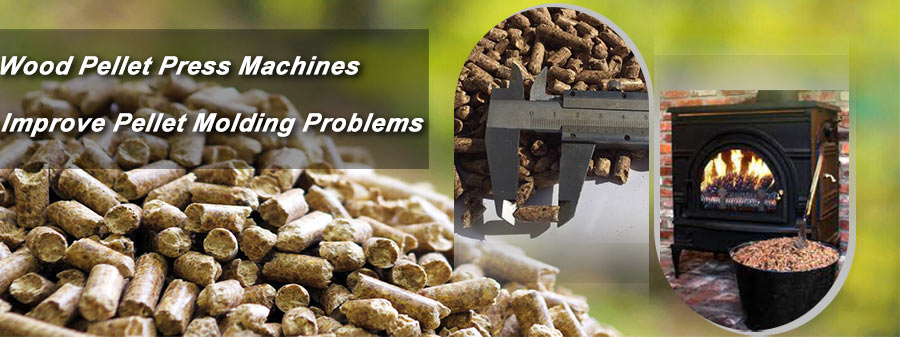
Wood Pellet Press Mavhines Solve Pellet Formation Problems
Factors Affecting the Wood Pellet Formation
We usually believe that there are many factors that affect the molding of wood pellets, but there are always some recognized influencing factors, which are briefly described below.
- Diversity of Raw Material Properties

Raw Materials for Biomass Pellet Press Machine
Different types of wood differ in fiber structure, moisture content and density, and these properties directly affect the wood pellets molding process. Softwoods have a more homogeneous fiber structure, which facilitates molding. However, hardwoods have a more complex fiber structure and require higher pressures and longer periods of time to achieve proper molding. (Read more about Raw Materials of Softwood and Hardwood Pellets>>)
Raw Material Properties of Wood
| Wood Type | Fiber Structure | Moisture Content (%) | Density (g/cm³) |
|---|---|---|---|
| Oak | Long fibers, tight | 8-12 | 0.6-0.9 |
| Cherry | Medium-length fibers, tight | 6-9 | 0.6-0.8 |
| Pine | Short fibers, somewhat loose | 9-12 | 0.4-0.6 |
| Birch | Medium-length fibers, tight | 6-9 | 0.6-0.8 |
| Maple | Medium-length fibers, tight | 6-9 | 0.6-0.8 |
- Differences in Pellet Shape and Size
The size and shape of the pellets play a vital role in the uniformity and stability of molding. Too large a pellet may make molding more difficult, while too small a pellet may cause clogging problems. The most common pellet diameters are 6mm and 8mm, and lengths generally do not exceed 40mm to prevent clogging of the pelletizing machine. In addition, inconsistencies in pellet size and shape can affect the flow of pellets through the wood molding machine, which in turn affects the consistency of the molding.
- Water Content Challenges
The moisture content of biomass pellets is an important factor in pellet formation. Excessive moisture content can make pellets difficult to mold and prolong pellet drying time, thereby affecting productivity. However, too low a moisture content can make the pellets friable and affect the stability of the molding process. The ideal moisture content for pellets should be 8-12%. (Learn about Harm of Improper Moisture to Biomass pellet Making Machine>>)
- Use of Additives
Some wood pellet production plants may add bio-binders, preservatives, etc. to improve the molding performance and burning effect of the pellets. However, the type and proportion of additives need to be precisely controlled, and too many additives may affect the final burning effect and environmental protection of wood pellets. In short, additives are best avoided.
Contact us for free to learn more about what affects pellet molding and what to do about it.
Innovation and Enhancement of Pellet Press Machines to Pellet Molding
Pellet mill as the core equipment for wood pellet molding, its improvement and innovation play an important role in improving the quality of biofuel pellet molding.
Mechanism of Wood Pellet Press Machine Making Pellets
Wood pellet press machine is a widely used equipment in various industries for making biomass pellets from wood and other woody raw materials. The pelletizing principle is based on the transformation of a series of mechanical processes.
- First, the raw material is fed into the biomass pellet press machine through a feeding device. Once inside the machine, the material undergoes compression and agitation. This is achieved by rotating blades or rollers that apply pressure to the material. The compression causes the pellets to bond with each other and form larger agglomerates.
- After compression and agglomeration, the pellets are sieved to obtain the desired particle size range. This is achieved by passing the particles through a mesh sifter, which separates pellets that are too large or too small.
- Finally, the pellets are discharged from the machine and wait to undergo further processing steps such as drying or coating, depending on the specific application.
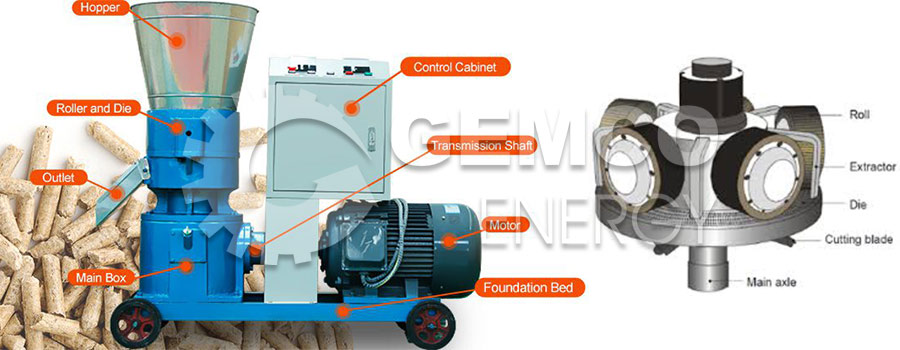
Flat Die Pellet Mill Structural Design
- Differentiation of Equipment Design
For different types of pellet raw materials, wood pellet press design should fully consider its characteristics and molding needs. Through differentiated design, the pellet mill can better adapt to the formation requirements of different types of pellets.
- Innovation of Pellet Press Machine Accessories
Continuously innovate and improve the key accessories of industrial pellet press machines, such as molds, pressure rollers and so on. Adopt wear-resistant materials and introduce advanced wood pellet manufacturing process to improve the durability and stability of wood pellet machine accessories, so as to prolong the service life. (Link to Wear-Resistant Materials for Wood Pellet Making Mill>>)
- Introducing Automation and Intelligence
Introduce automation and intelligent building technology to realize real-time monitoring and regulation of the biological pelletizing process. Through data analysis and feedback, Wood pellet manufacturing line can finely control the pelleting process, thus improving the consistency and quality of molding.
If you have further questions about our biomass pellet mill design and engineering principles, or would like to know more detailed information, such as wood pellet press cost, production capacity, power source (PTO pellet press, diesel pellet press, gasoline pellet press, electric pellet press). We welcome you to contact us. Our professional team will be happy to support you and answer your questions.
Measures of Wood Pellet Production Plants for Improving Wood Pellet Formation
It is not enough to rely on the efforts of the biomass pellet press machine alone to address the common molding problems in wood pellet production system. In order to optimize wood pellet production, wood pellet production plants must improve the entire production process to reduce the factors that can affect pellet formation at each stage.
- Optimize raw material management and treatment
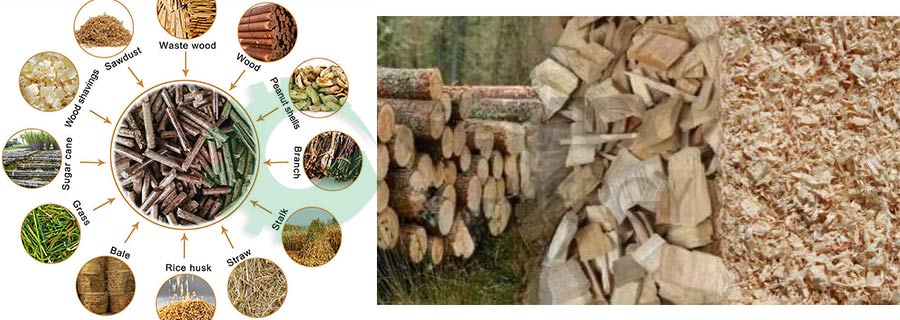
Pre-treatment Process of Raw Materials in Wood Pellet Plant
Raw material pretreatment is the key link to improve wood pellet molding. Through reasonable selection of raw materials, the influence of raw material changes on molding quality can be effectively avoided in the step of raw material pretreatment. In addition, processing steps such as cutting, crushing and drying of raw materials can obtain more uniform granular raw materials, thus improving molding efficiency and molding quality. (Link to Wood Pellet Mill Manufacturing Raw Materials into Pellets>>)
- Optimize biomass pellet process parameters
For different types of raw materials, optimizing the process parameters of the molding machine is the key to improving the molding quality. Timely adjustment of pressure, temperature, time and other parameters can obtain better molding effect and pellet quality. In addition, it is also key to continuously adjust the parameters to adapt to the changes of different batches of raw materials.
- Precise control of water content
Precise control of the moisture content of the pellets is essential to ensure the molding quality. Through the introduction of advanced moisture detection and control technology, the moisture content of pellets is controlled within a suitable range (8%-12%) to ensure the stability and consistency of pellet molding.
- Continuous adjustment and monitoring of additives
If additives are used, wood pellet making plant should continuous trials and testing to determine the optimum type and ratio of additives. The burning effect and environmental friendliness of the pellets should also be monitored regularly. And the use of additives should be adjusted in a timely manner according to the monitoring results to ensure the quality and sustainability of the pellets.
For specific questions or equipments about wood pellet production line, please contact us and we will provide you with more detailed answers free of charge!
Choose GEMCO: Begin Your Journey to Optimize Wood Pellet Forming
If you would like to know more about how biomass pellet machines are carefully designed to optimize the forming of wood pellets, please contact us!
GEMCO, as one of the leaders in the field of biomass pellet press in China, has many years of rich experience and expertise dedicated to ensuring that our machines produce high-quality wood pellets efficiently and reliably. Our products have been successfully exported to many countries such as the USA, Canada, Australia, UK, Serbia, Malaysia, etc. and are highly praised for high quality, low cost and excellent service. In addition, whether you need technical details about the wood pellet production process or advice on equipment selection, we are ready to work with you to meet your needs. Please feel free to contact us for any questions or needs!


